Project title
The Bear’s track: We have chosen this title because both the logo of the Sirente Velino Regional Park (SVRP) and the logo of Salviamo l’Orso show a bear’s track. Finding tracks of the Marsican brown bears (Ursus arctos marsicanus) within the area of intervention is the most reliable tool to verify the effectiveness of this project. The pear and the track (in this case a kind of quality brand) in the logo proposal Figure 1 aims to represent the relationship between fruit trees and the bear.
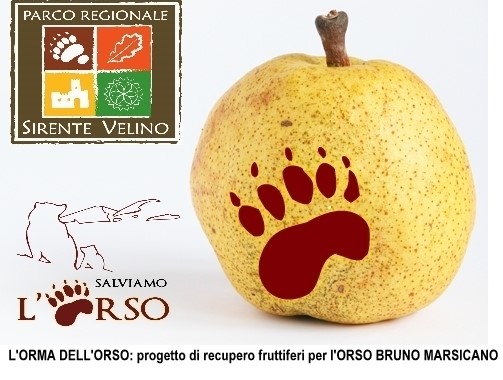
Figure 1 – Project logo The Bear’s track.
Motivations
According to PATOM (Action Plan for the Protection of the Marsican Bear), the SVRP is considered a peripheral location in terms of the territory of the Marsican brown bear. Nevertheless, the SVRP territory provides fundamental connections between the Abruzzo, Lazio and Molise National Parks (ALMNP); the core area of the current Marsican brown bear population. The SVRP also provides connections to other potentially suitable areas such as the Duchessa Nature Reserve, Cicolano sub-region of Lazio, and the Gran Sasso and Laga Mountains National Park. According to PATOM’s Actions A4 (new presence areas) and A3 (connection areas) the future of this species, on the brink of extinction, depends strictly upon on its capability expand outside of the core area of ALMNP, and the Buffer Zone.
Thus, Salviamo l’Orso is implementing new methods to improve the suitability of the project area, enabling the possibility of hosting individual brown bears and/or possible family units dispersing from the ALMNP. The organisation aims to provide an enhancement of food sources in a territory where the presence of bears, although occasional, has been historically proven and also recently confirmed. This is possible through the rehabilitation of abandoned and unproductive fruit tree groves, i.e. ACTION C.7 of LIFE ARCTOS project, supporting the ‘enhancement of food sources for the Marsican brown bear in the ALMNP and Buffer Zone’. This project also incorporates scientific objectives; signs of the bear’s presence i.e. tracks, scats, tufts of fur etc. within the fruit groves helps with the monitoring of the species movements, as well as the count of individuals by providing genetic samples.
One of Salviamo l’Orso’s defining principles is to spread the “culture of the bear”. With this in mind, every initiative is not solely an action of conservation, but also an opportunity to involve the local population and the media. This works to raise a more widespread awareness of the importance of protecting this flagship species of the Italian and Abruzzo fauna, along with its habitat.
Descriptions
1. Description of the institutions involved
- SVRP Authority
- Municipality of Tione degli Abruzzi (AQ)
- Schools in the project area
2. Description of the context, environment and areas of interest
The chosen study area is composed of abandoned fruit trees groves within the SVRP in territories where the presence of Marsican brown bears has been proven. The focus will be concentrated upon the areas of Pagliare di Tione, Piano di Iano and Le Vallicelle, in the municipal territory of Tione degli Abruzzi (see Figure 2).
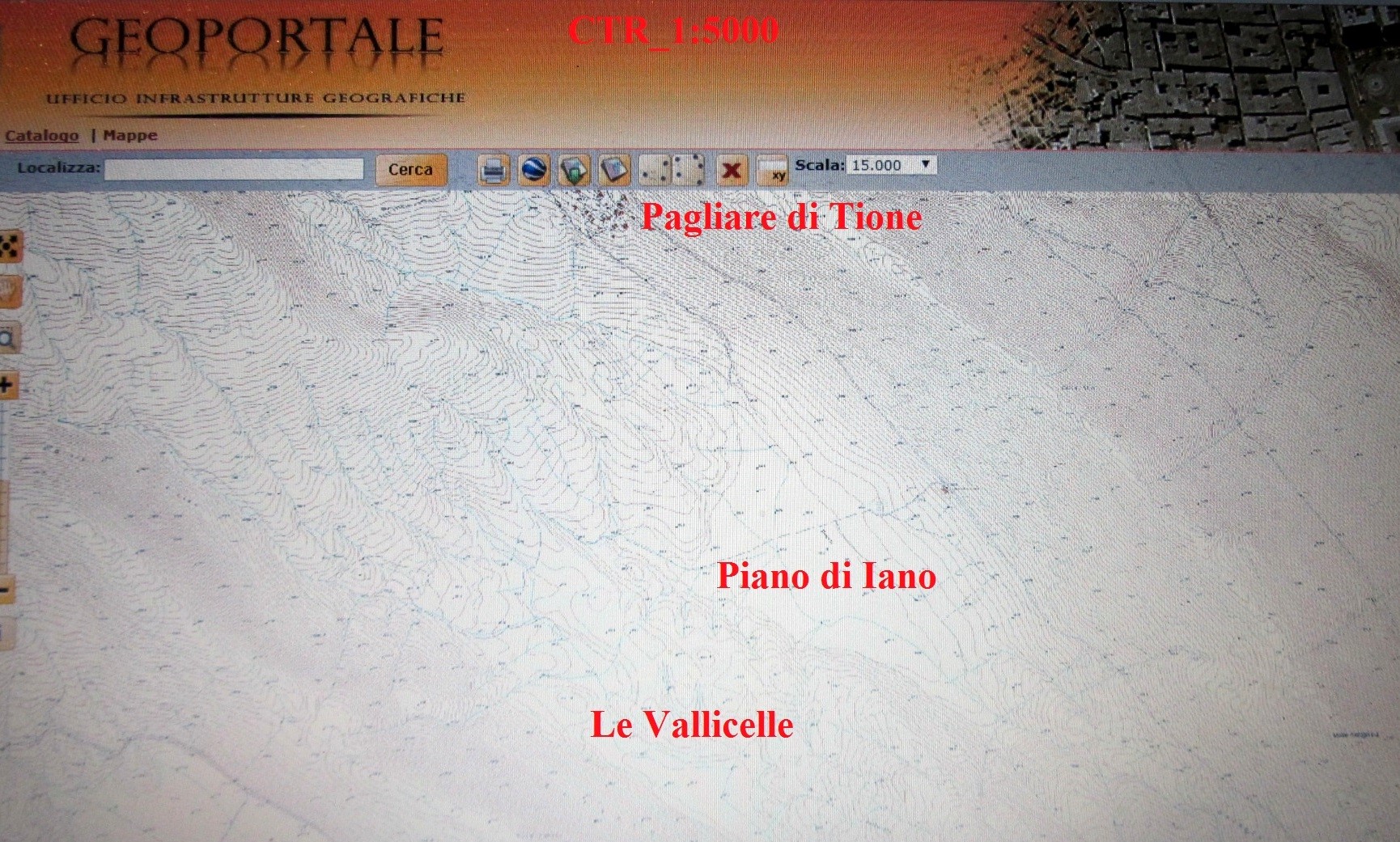
Figure 2. Project area.
3. Analysis of available resources
The SVRP provided a 2014-2016 grant for the purchase of the necessary material for maintenance of fruit tree groves and monitoring of the project areas, and in terms of human resources there are the members of Salviamo l’Orso ONLUS.
Goals
- To increase the presence of the Marsican brown bear and promote its population growth. It is scientifically proven that the reproductive success of a species is directly compared to the availability of food sources.
- To recover the man-bear-land relationship through the rediscovering of traditional economic resources which formed an important part of the Abruzzo mountain culture, as testified on by the pagliare di Tione. The loss of direct knowledge of the rural heritage of our lands has led to a nature and culture deficit within modern communities, deprived of a set of lost oral knowledge; perfectly represented by the current depletions of the once lively fruit tree groves. The recovery of these groves does not exclude acquiring a renewed awareness about the intimate relationship between man and nature that has characterized the Abruzzo people for centuries. The survival of the bear to this day is perhaps the highest expression of this relationship, and should bring pride to the people of Abruzzo.
- To value areas of strong historic and cultural heritage, such as Pagliare di Tione (for the ancient use of pagliare in the period of summer grazing and for storing straw and hay).
Strategies
- Recovery of abandoned or unproductive fruit tree groves, and a relative increase in the production of trees and shrubs, particularly the following species: Malus sylvatica, Pyrus pyraster, Prunus mahaleb, Prunus avium, Sorbus aria, Sorbus domestica, Sorbus aucuparia, Ribes uva-crispa, Rubus idaea, Rosa canina, Cornus mas, Rhamnus alpina;
- Dissemination of environmental awareness through the direct involvement of volunteers and the implementation of practical actions on the ground;
- Communication to schools and local people, but also to the vast public and media through press releases and the Salviamo l’Orso website. Educating the population on the “culture of the bear”, whereby the bear is not intended as a competitor to traditional rural activities, but as a symbol of a specific land; a supreme indicator of environmental quality;
- Active monitoring actions in the project areas. Turning attention to marginal abandoned lands, rediscovering their deep cultural and natural value in relation to tradition and biodiversity;
- According to Action D2 of PATOM (Population monitoring); monitoring of bear presence in the study areas to verify the project’s effectiveness, to collect data on the movement of this species, to provide the SVRP Biologists Office with possible samples, and consequently increase the PATOM shared database (some members of Salviamo l’Orso are qualified to collect genetic samples after a training course and are part of the Marsican brown bear monitoring network of Lazio Region);
- If needed, bee hives and small farms in and around the project area will be secured by electrified fences to prevent bear damage and possible conflicts with the locals. These interventions are mentioned in the ACTION C.5 of LIFE ARCTOS (electrified fences to secure livestock, bee hives and valuable cultivations in critical areas and their maintenance).
People and institutions involved
SVRP, Salviamo l’Orso members, Municipality of Tione degli Abruzzi, school children, the general public.
Tactics
- Identification of abandoned fruit tree groves in the municipal territory of Tione degli Abruzzi, and the marking of these locations by GPS.
- Analysis of the land to identify vegetal species to preserve and those to remove.
- Request for authorization to the Municipality and the SVRP to carry out the fruit tree recovery and maintenance work.
- Project information material (panels, brochures, articles and publications on the Salviamo l’Orso website and social media).
- Cutting away invasive species of no conservational value to free fruit trees and trim them properly.
- Presence-absence monitoring of the intervention areas in agreement with SVRP,
- Environmental awareness meetings in local schools.
- Seasonal maintenance works.
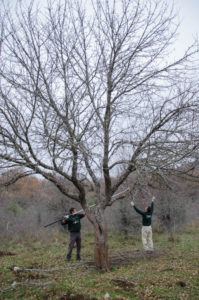 |
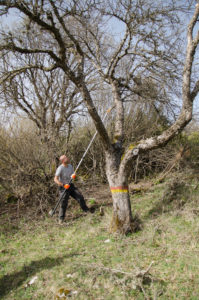 |
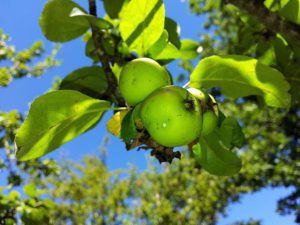 |
|
Figure 3. Different phases of pruning (November 2015; April 2016) and the first results obtained (fruits, August 2016). |
||
Budget
| Year | Budget |
| 2014/2015 | 900 € |
| 2015/2016 | 900 € |
Project duration
2014-2016
Bibliography and webgraphy
- Vigna Taglianti, A. 2003. Ursus arctos, Linnaeus 1758. Note di sistematica. In Fauna d’Italia, Volume XXXVII. Mammalia. III. Carnivora-Artiodactyla. Calderini, Bologna, Italia, pp. 87-92.
- Tarquinio G., 2001. Testimonianze storiche della presenza dell’orso bruno Marsicano in Abruzzo e nelle aree limitrofe. Grafitalia Edizioni, Sora, pp.80.
- Taglienti A., 1984. Il Monastero di Trisulti e il Castello di Collepardo. Terra Nostra Ed., Roma, pp.529.
- http://www.regione.abruzzo.it/xAmbiente/index.asp?modello=patom&servizio=xList&stileDiv=mono&template=default&b=patom
- http://www.parcosirentevelino.it/
- http://www.salviamolorso.it/








